Diocese Marseille Name Eugene Mazenod Beatified October 19, 1975 Term ended 21 May 1861 Ordination December 21, 1811 | Appointed 2 October 1837 Patronage Dysfunctional family See Marseille Role Saint | |
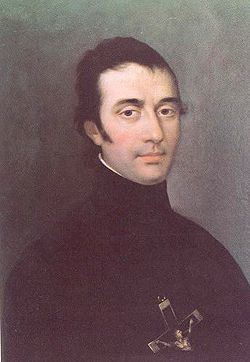 | ||
Predecessor Fortune-Charles de Mazenod Successor Patrice-Francois-Marie Cruice Died May 21, 1861, Marseille, France People also search for Frederic Ozanam, John Cassian, Victor of Marseilles | ||
Icon of st eugene de mazenod
Saint Eugène de Mazenod (born Charles-Joseph-Eugène de Mazenod; 1 August 1782 – 21 May 1861), more commonly known as Eugène de Mazenod, was a French Catholic clergyman, beatified on 19 October 1975 by Pope Paul VI, and canonized on 3 December 1995 by Pope John Paul II.
Contents
- Icon of st eugene de mazenod
- Saint eugene de mazenod
- Refugee
- Spiritual journey of conversion
- Priest
- Oblates of Mary Immaculate
- Foreign Missions
- References

Saint eugene de mazenod
Refugee
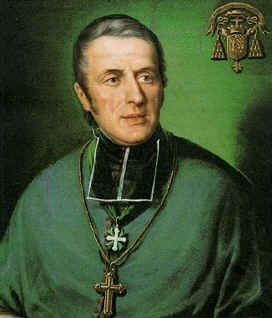
Eugene de Mazenod was born on 1 August 1782 and baptized the following day in the Église de la Madeleine in Aix-en-Provence. His father, Charles Antoine de Mazenod, was one of the Presidents of the Court of Finances, and his mother was Marie Rose Joannis. Eugene began his schooling at the College Bourbon, but this was interrupted by the events of the French Revolution. With the approach of the French revolutionary forces, the family was forced to flee to Italy.
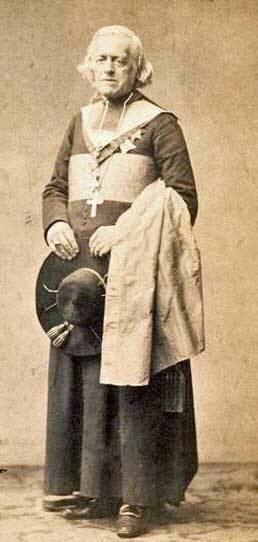
Eugene became a boarder at the College of Nobles in Turin (Piedmont), but a move to Venice meant the end to formal schooling. With their money running out, Eugene's father was forced to seek various employments, none of which were successful. His mother and sister returned to France - eventually seeking a divorce so as to be able to regain their property that had been seized. Eugene was fortunate to be welcomed by the Zinelli family in Venice. One of their sons, the priest Bartolo Zinelli, took special care of Eugene and saw to his education in the well-provided family library where the young adolescent spent many hours each day. Don Bartolo was a major influence in the human, academic and spiritual development of Eugene.
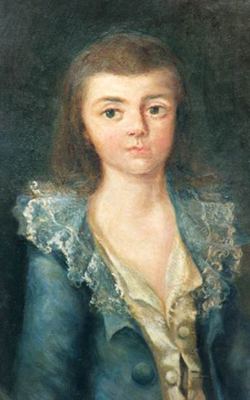
Once again the French army chased the émigrés from Venice, forcing Eugene and his father and two uncles to seek refuge in Naples for less than a year, and finally to flee to Palermo in Sicily. Here Eugene was invited to become part of the household of the Duke and Duchess of Cannizaro as a companion to their two sons. Being part of the high society of Sicily became the opportunity for Eugene to rediscover his noble origins and to live a lavish style of life. He took to himself the title of 'Comte' ("Count") de Mazenod, did all the courtly things, and dreamed of a bright future.
Spiritual journey of conversion
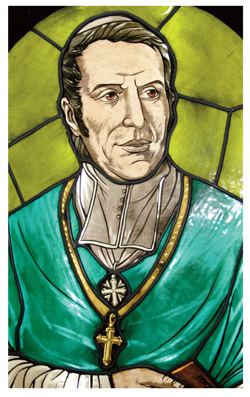
At the age of twenty, Eugene returned to France and lived with his mother in Aix en Provence. Initially he enjoyed all the pleasures of Aix as a rich young nobleman, intent on the pursuit of pleasure and money - and a rich girl who would bring a good dowry. Gradually he became aware of how empty his life was, and began to search for meaning in more regular church involvement, reading and personal study, and charitable work among prisoners. His journey came to a climax one Good Friday, when he was 25 years old. Looking at the sight of the Cross he understood: "I had looked for happiness outside of God, but outside of him I had found only affliction and disappointment." The sight of the oblation of Jesus on the Cross, with his arms outstretched in love, led Eugene to respond in love: "What more glorious occupation than to act in everything and for everything only for God, to love him above all else, to love him all the more as one who has loved him too late."
Priest
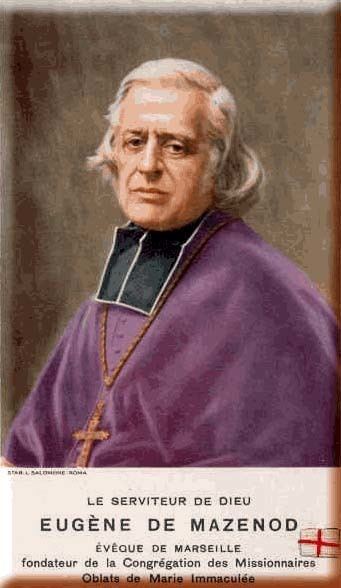
In 1808, he expressed his desire for dedication to Jesus the Savior by beginning his studies for the priesthood at the Saint-Sulpice Seminary in Paris and was ordained a priest at Amiens (Picardy), on 21 December 1811. Since Napoleon had expelled the Sulpician priest from the seminary, Eugene stayed on as a formator for a semester. As a member of the Seminary, notwithstanding personal risk, Eugene committed himself to serve and assist Pope Pius VII, who at this time was a prisoner of emperor Napoleon I at Fontainebleau. In this way he experienced at firsthand the suffering of the post-Revolutionary Church.
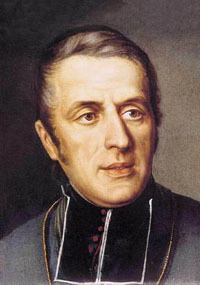
On his return to Aix, Father de Mazenod asked not to be assigned to a parish but to dedicate himself fully to evangelizing those who were not being touched by the structures of the local church: the poor who spoke only the Provençal language, prisoners, youth, the inhabitants of poor villages who were ignorant of their faith. His constant message was to invite people to enter into the same experience of Jesus the Savior that he had at his conversion. Looking at everyone and every situation through the eyes of the Savior, he showed the poor the human and spiritual dignity that was theirs, and taught them how to live in relationship with the Savior. The goal of his priestly preaching and ministry was always to lead others to develop themselves fully as humans, then as Christians and finally to become saints.
Oblates of Mary Immaculate
On 25 January 1816, "impelled by a strong impulse from outside of himself" he invited other priests to join him in his life of total oblation to God and to the most abandoned of Provence. Initially called "Missionaries of Provence," they dedicated themselves to evangelization through preaching parish missions in the poor villages, youth and prison ministry. In 1818 a second community was established at the Marian shrine of Notre Dame du Laus. This became the occasion for the missionaries to become a religious congregation, united through vows and the evangelical counsels. Changing their name to Missionary Oblates of Mary Immaculate, the group received papal approbation on 17 February 1826.
Foreign Missions
In 1841, Bishop Bourget of Montreal invited the Oblates to Canada. At the same time there was an outreach to the British Isles and Ireland. This was the beginning an inspiring history of missionary outreach to the most abandoned peoples in Canada, United States, Mexico, England and Ireland, Algeria, Southern Africa and Ceylon during the Founder's lifetime. In 200 years this zeal spread and took root in the establishment of the Oblates in nearly 70 countries.
From 1837 to 1861, he was the bishop of Marseille, in Provence (south-eastern France). During his episcopacy, he commissioned Notre-Dame de la Garde, an ornate Neo-Byzantine basilica on the south side of the old port of Marseille. He inspired local priest Joseph-Marie Timon-David to found the Congregation of the Sacred Heart of Jesus in Marseille in 1852.
